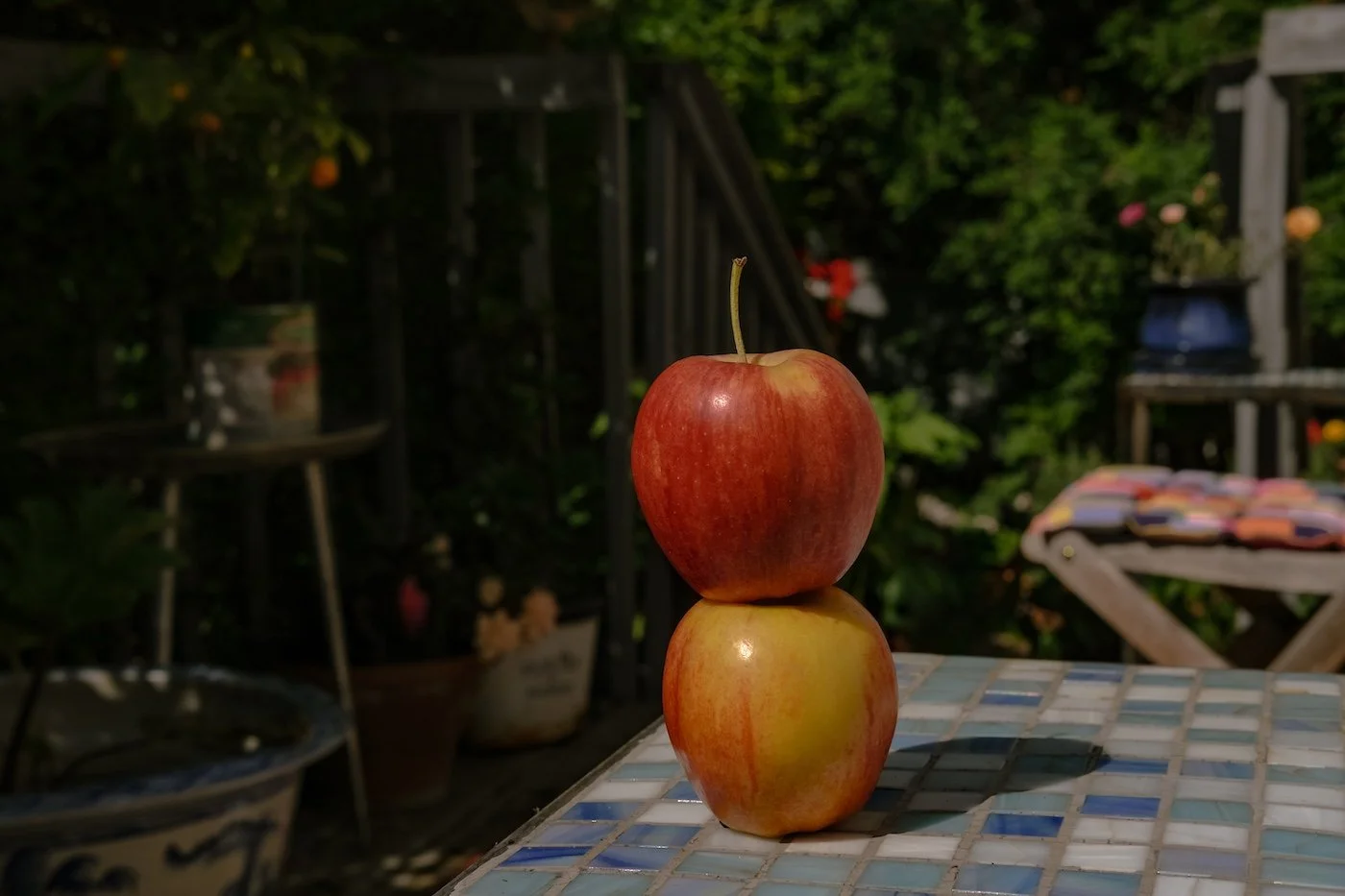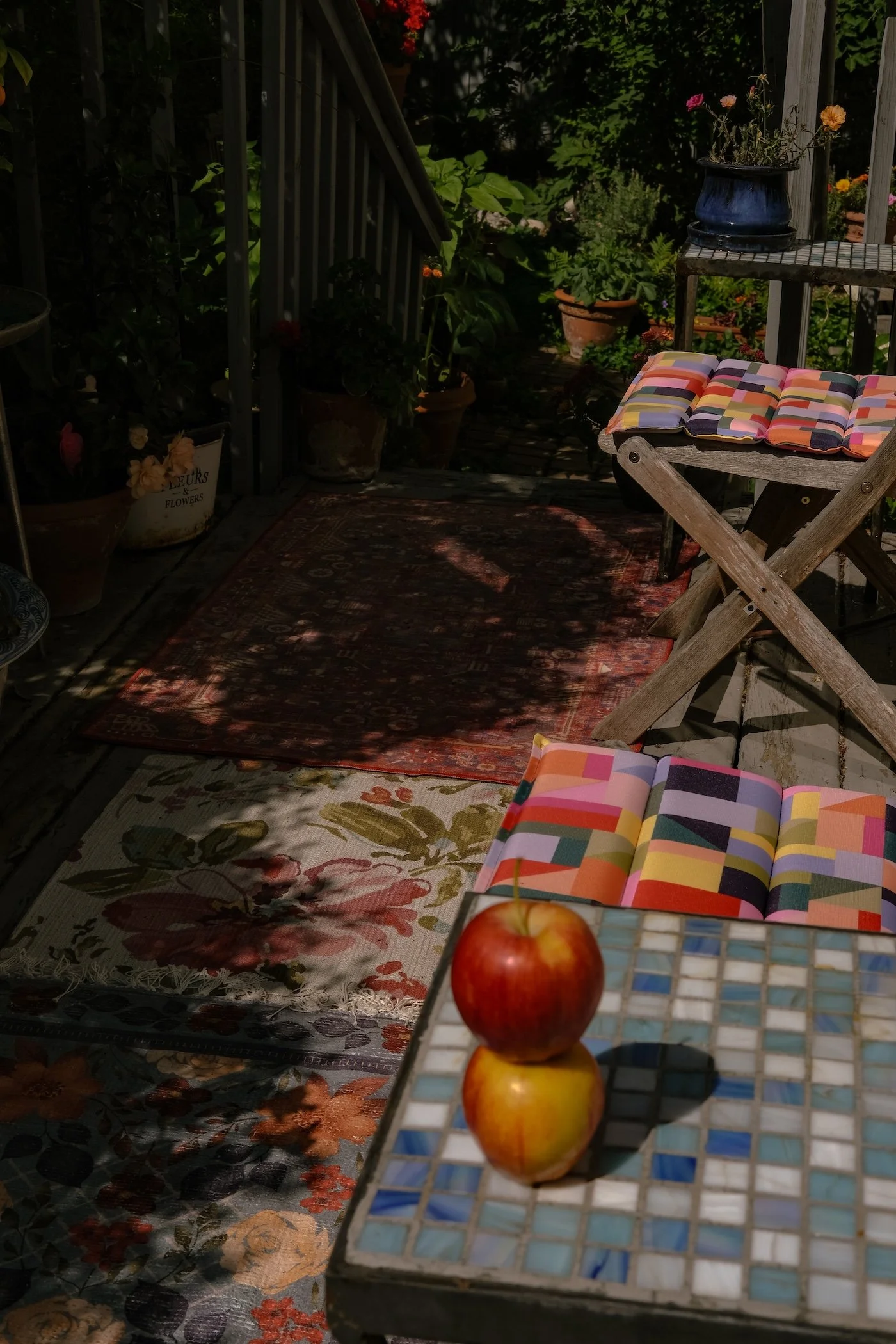Live Like an Artist – Thinking About Seeing
I noted the line by Rumi in my book Apples on a Windowsill….that our eyes are small but with them we see enormous things. And I think as artists we need to remember that. I’ve felt so powerless of late, so overwhelmed. And. I’ve kept looking, seeing, registering, noting. This helps. I will admit that I love the essay I wrote about my heterochromia in Apples on a Windowsill.
When things are a lot, it’s good to ground oneself by noticing small things in one’s vicinity. I also like to think about seeing. So let me share some of the stuff that has been cropping up for me on this subject.
Firstly, the apple test. I think about this all the time. It became viral over the pandemic, this knowledge about how we see. (I think I’ve shared this before but it’s pretty fascinating and good to remember). The term is aphantasia.
At the Creative Revolution, they say, “close your eyes and imagine an apple, then judge the clarity of the apple based on the scale of 1 – 5. If you score a 5, if you cannot see any apple at all but know you are thinking of an apple, then you might have a condition called aphantasia.” What does it change when we realize that other people visualize things differently in their mind’s eye? How does that affect our understanding of the world, which is often these days presented to us as a hectic chaos of images?
I’ve been mentioning the Andy Warhol quotation for some time, but I think it goes on resonating.
“I always think about what it means to wear eyeglasses. When you get used to glasses you don't know how far you could really see. I think about all the people before eyeglasses were invented. It must have been weird because everyone was seeing in different ways according to how bad their eyes were. Now, eyeglasses standardize everyone's vision to 20-20. That's an example of everyone becoming more alike. Everyone could be seeing at different levels if it weren't for glasses.”
I’ve been revisiting the book of conversations and essays by Wim Wenders (who I’ve been obsessed with since ages ago watching Wings of Desire, and more fuel to the love fire, the recent Perfect Days).
This reminds me of things I read in WJT Mitchell’s seminal book on picture theory back in the day. Wenders says, “Perhaps the hectic inflation of images has already destroyed too much. Perhaps images that can unite the world, and are at one with the world, perhaps they are gone forever.” Good to note that Wenders hasn’t stopped making films. Not at all.
“In an age of “all-pervasive image-making, we still do not know exactly what pictures are, what their relation to language is, how they operate on the observers and on the world, how their history is to be understood, and what is to be done with or about them.”
And now we have AI, and a lot of folks cannot immediately identify such images. Sometimes it’s very obvious, sometimes tricky at first, even for me. Eventually though, if you look long, you’ll see the images are not right. They feel bad, or easy, or smooth. So there’s that.
Some more quotations from Wenders:
”It’s not my job to express myself in words. My job is seeing, and then showing what I’ve seen.”
On colours in film, he talks about “the shock of watching an actor or actress and suddenly be so moved, it feels as though you’re sitting opposite them in life and could see through his (or her) eyes right into the soul. Those ‘colours of the inner eye’ would be the truest and most beautiful colours in a film, whether it be Technicolor, Tricolour, Eastmancolor or just black and white.” Then he goes on to simply list “some instances of eye colours that I saw in the festival.”
There is a line of advice in a Charles Wright poem that I think about a lot (having heterochromia, myself):
“Walk as though you’d been given one brown eye and one blue.”
I recently read Salman Rushdie’s memoir, Knife, of the time around the horrific stabbing incident where he nearly lost his life and did lose his eye. I honestly didn’t expect too much of it but I can’t stop thinking about it — it’s amazing, such a gift in my opinion. It’s not perfect, not at all, but it did seem real even in its deficiencies. Especially so? But the parts I was most interested in were about the eye. (Makes sense right?). And the descriptions were properly medical but also gruelling:
“A nurse had to come in every hour to moisten it with saline solution, because it was so distended, bulging out so far, that it was impossible for the eyelid to close, so the eye couldn’t moisturize itself. There was plenty to cry about, but there were no tears.”
We learn later in the book that his worst fear, or as in Orwell’s Nineteen Eight-Four, “the worst thing in the world,” is blindness. “For me, it always was, and still is, blindness.” And now, not only has he lost his right eye, but his left has “suffered from macular degeneration.”
I remember complaining back when I had Bell’s Palsy, about having to scotch tape my eyelid down, and after reading Rushdie’s HARROWING account of having his lid sewn shut, I really feel like I had very little to whinge about.
Near the end of the book, Rushdie says that “Art is not a luxury. It stands at the essence of our humanity, and it asks for no special protection except the right to exist. It accepts argument, criticism, even rejection. It does not accept violence.”
I’m popping this post into my “live like an artist” category because I think it’s important to remember that we’re all seeing the world differently. Does this affect our art-making? Rushdie talks about being compared to Nietzsche simply because Nietzsche “began to suffer from shortsightedness” which then changed “his way of writing.” And, “It was assumed that mine would change, too, both aesthetically and also in the substance of my thought.”
Is our job seeing? Is it seeing how others see? How do you as an artist see? How is your seeing unique? What are the limitations and constraints? How could you see better? What is your relationship with clarity? with blur? What is your night vision like? Your day vision? How will you get others to see what you see or want them to see? How do you leave room for others to see?










